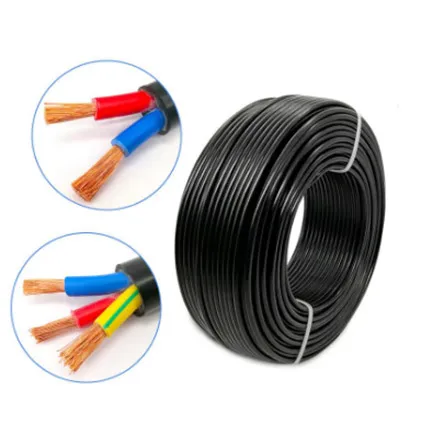
From charging your phone to powering skyscrapers, cables are the hidden bloodstream of modern life. Let's explore the fascinating world behind these essential connectors.
The Unsung Heroes of Modern Life
Think about your typical morning: You wake up to a phone alarm charged overnight, switch on lights, brew coffee, commute listening to streaming music. None of this would happen without cables silently doing their job. They're like oxygen for technology – invisible until missing. Cables have evolved far beyond simple wires. Today's cables are engineered marvels designed for specific environments and challenges – whether underwater connecting continents or inside your car's dashboard.
Power Cables: The Energy Highway
Low Voltage Cables
The everyday heroes in our homes and offices. You'll recognize them as appliance cords and extension cables. They typically handle under 50V and come with PVC insulation for flexibility. Notice that flat TV power cord? Its slim profile hides multiple insulated copper strands.
Data Cables: Information Superhighways
Ethernet Cables
Remember upgrading from Cat5 to Cat6? That extra twist per inch reduces crosstalk. Premium Cat8 cables now handle 40Gbps – perfect for 8K video streaming. Their RJ45 connectors click satisfyingly into place.
Fiber Optic Cables
The VIPs of data transfer. Inside those sleek tubes, photons travel through glass fibers thinner than hair. Single-mode fibers can transmit data 100km without repeaters! Watch installers carefully avoid sharp bends that could fracture the glass.
Coaxial Cables
That familiar cylinder shape? The central copper conductor is shielded by braided metal and plastic layers. Perfect for high-frequency signals, they power your cable TV and router connections with minimal interference.
Specialized Cables: Custom Solutions
Instrumentation Cables
Factory floor essentials. These precision cables, often twisted in pairs, connect sensors carrying milliamp signals. Look for the M12/M8 connectors enabling quick industrial equipment swaps.
Submarine Cables
Underwater internet backbones. Armored with steel wires and waterproof polymers, they rest on ocean floors carrying 99% of international data. Special ships deploy them using massive plows.
Control Cables
Industrial nervous systems. From factory robots to building automation, these flexible multi-conductor cables coordinate machinery. Quality ones feature oil-resistant insulation and woven copper shielding.
How Industries Use Cables Differently
| Industry | Cable Type | Real-World Application |
|---|---|---|
| Telecom | Fiber Optic Bundles | Undersea cables connecting continents with multi-terabit capacity |
| Healthcare | Medical Grade Cables | Biocompatible cables for MRI machines monitoring patients |
| Transportation | Automotive Wiring Harnesses | Heat-resistant bundled cables throughout EV battery systems |
| Construction | Fire-Rated Cables | Mineral-insulated cables maintaining emergency systems during fires |
| Entertainment | Multi-core Stage Cables | Snake cables transmitting audio/video signals for live events |
Future Cable Trends
Smart Self-Monitoring Cables
Tomorrow's cables will integrate microsensors tracking temperature, tension, and damage. Picture cables alerting technicians: "Section 3B approaching critical heat threshold" before failure.
Cable Selection Guide: Matching Wire to Need
Environment First: Oil rig cables need chemical resistance, theater cables flexibility. Always check IP (Ingress Protection) ratings.
Capacity Matters: Calculate voltage drop over distance. Oversize conductors for critical applications.
Future-Proofing: Install Category 8 Ethernet even if using Cat6 equipment today – upgrades will come.
The Sustainable Cable Movement
Leading manufacturers now use 85% recycled copper and insulation. Look for certifications like EPEAT. Recycling innovations can now separate copper from plastic efficiently using electrostatic separation.
Conclusion: More Than Just Wires
From charging your headphones to enabling global communications, cables bridge our physical and digital worlds. As technology evolves, so will these remarkable conductive pathways. The next time you plug in a device, appreciate the engineering marvel in your hand – it's traveled farther than you think.
Tags:
Recommend Products












